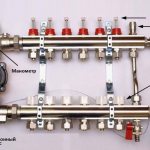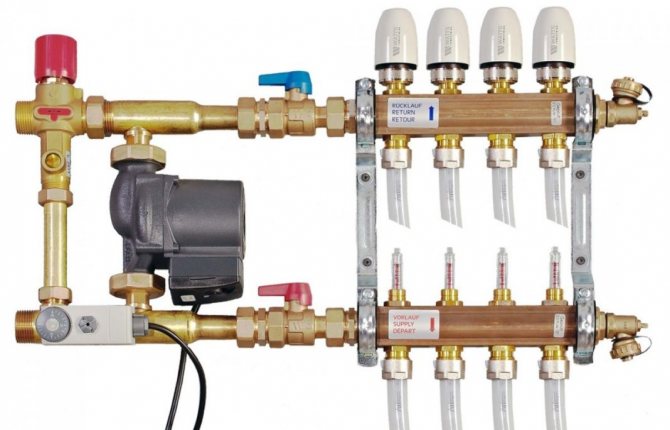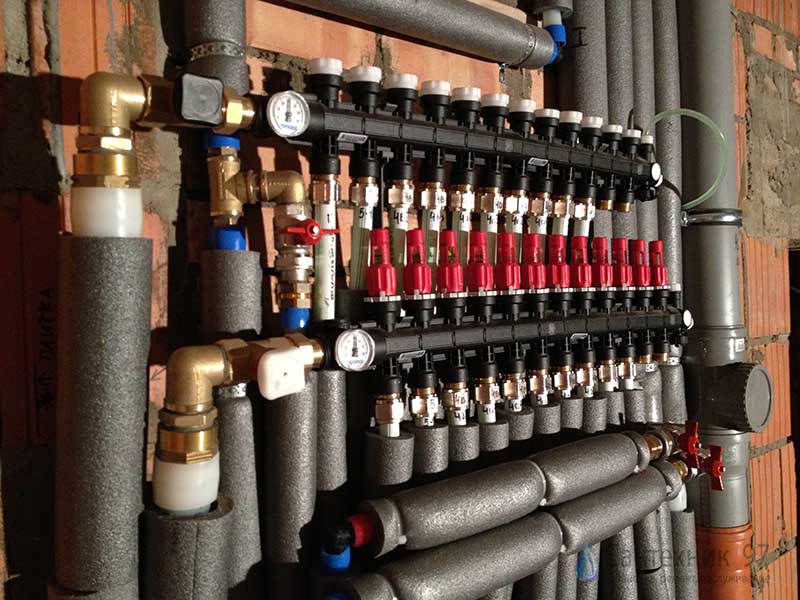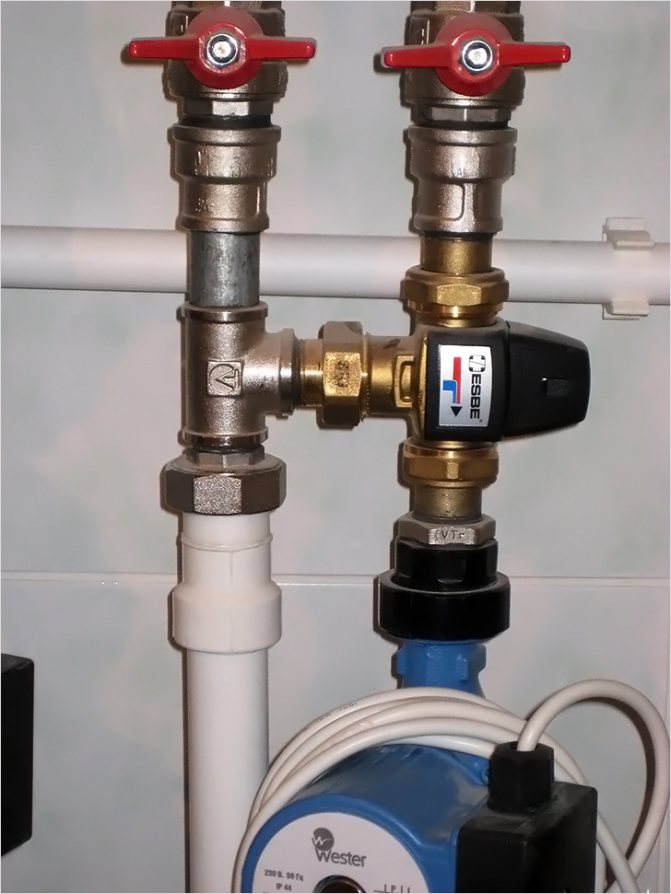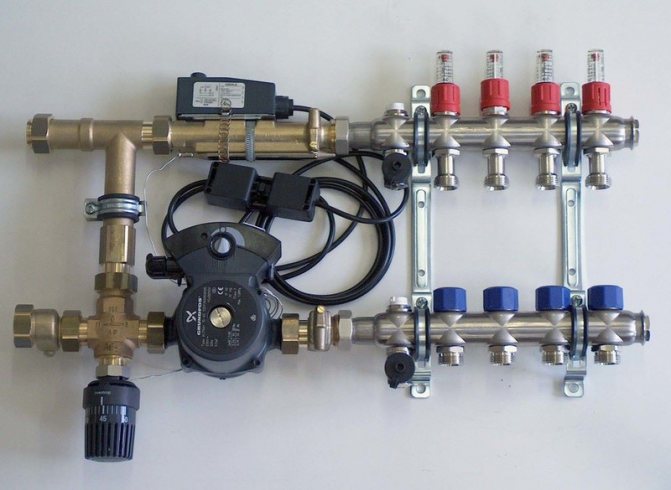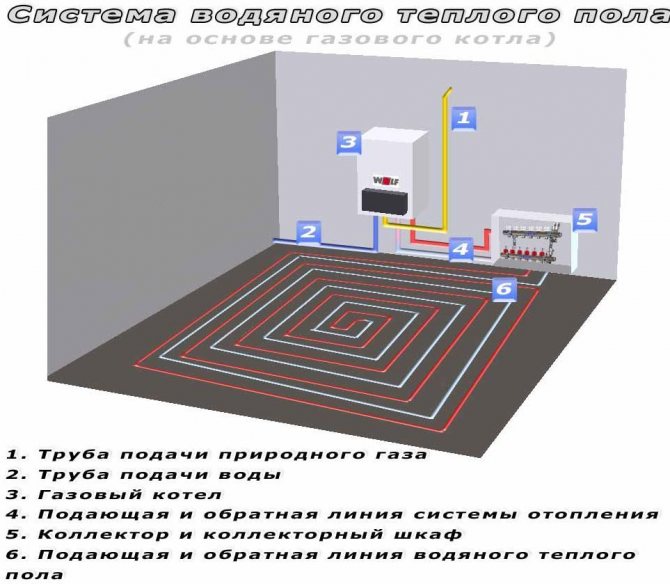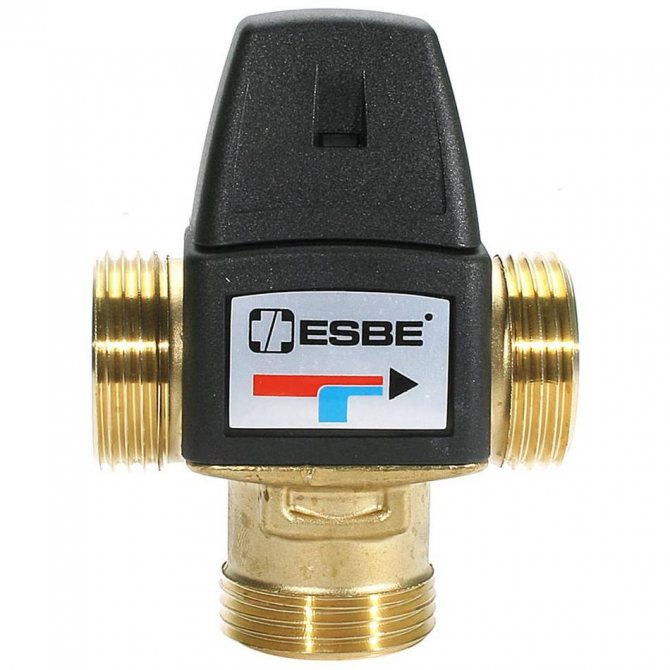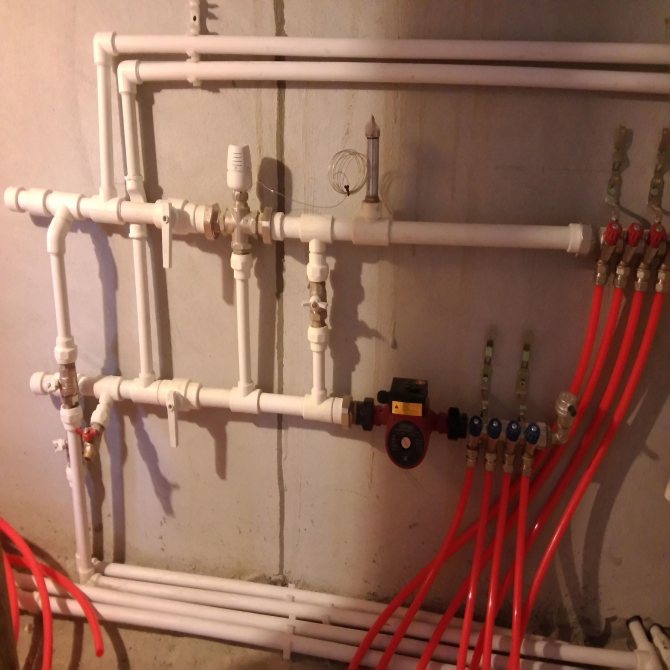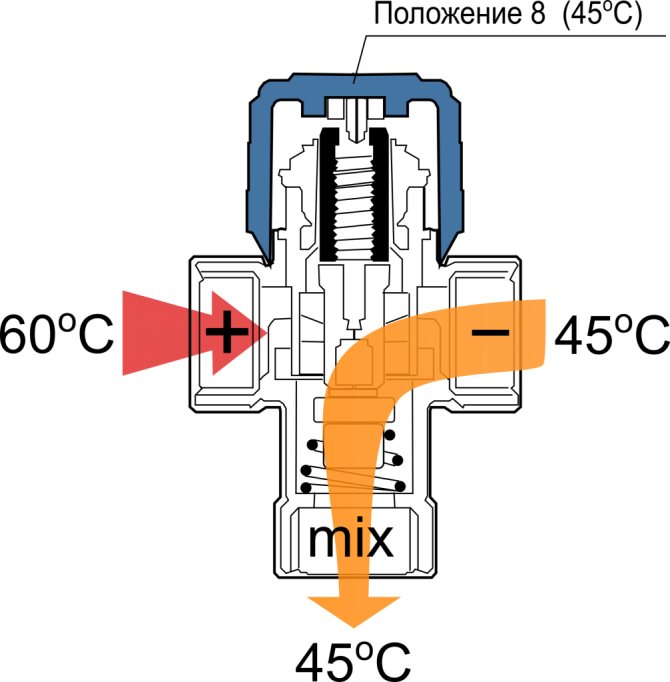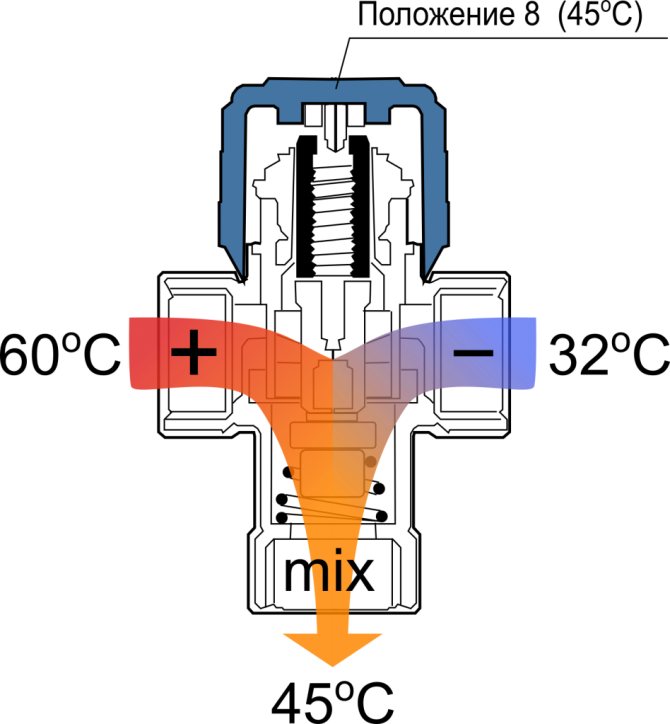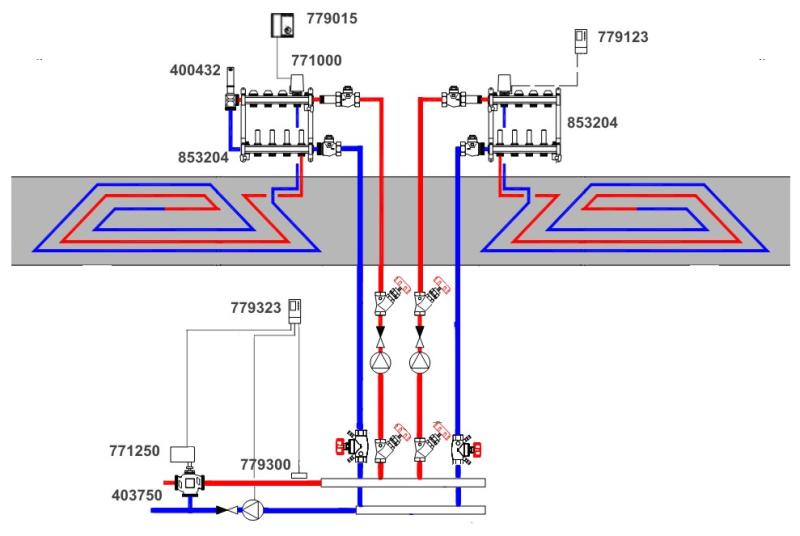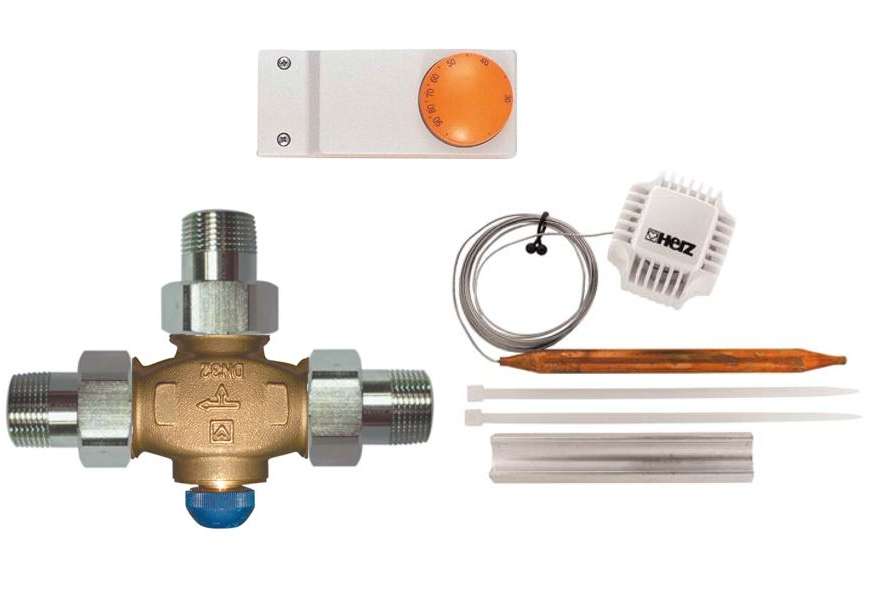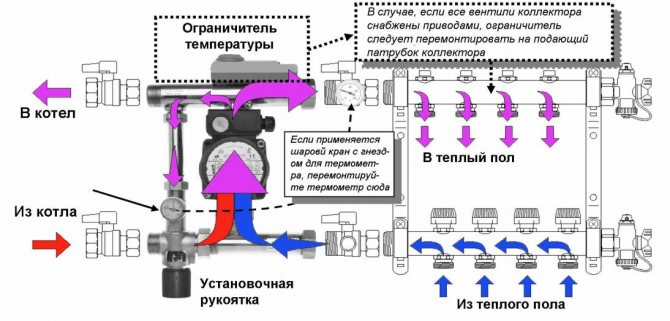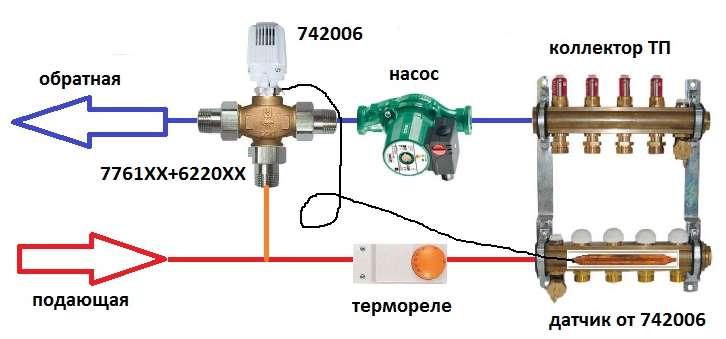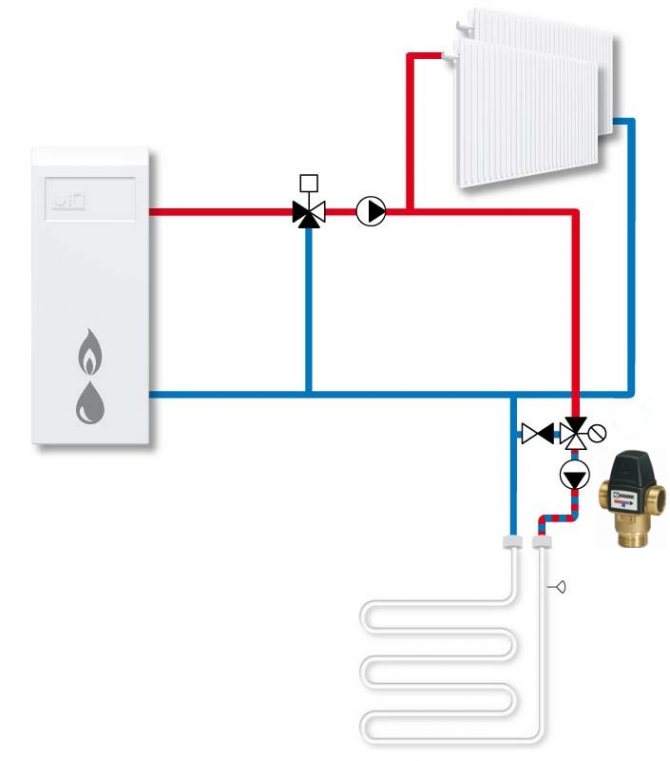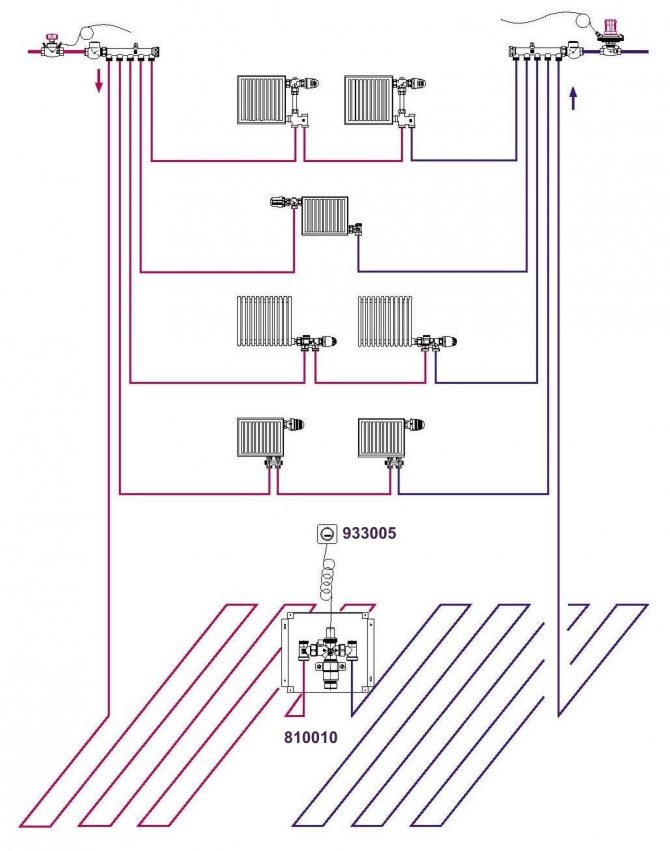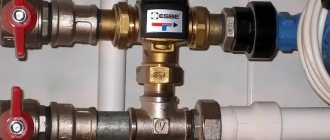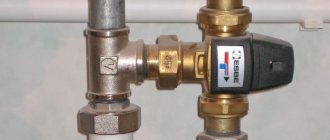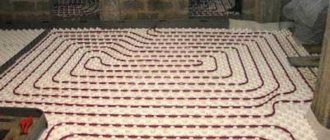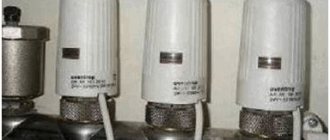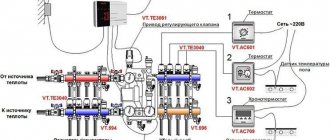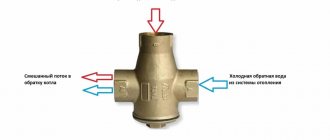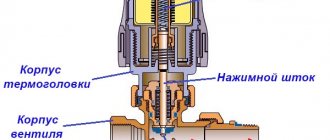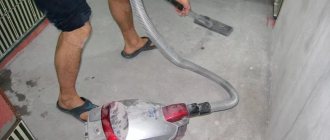Until recently, underfloor heating was associated with a luxury item. But as it turned out, such an engineering solution is the most effective for creating a satisfactory indoor climate. The usual placement of radiators leads to the fact that all the heat immediately rises, while leaving the lower layers of the air less heated, and the floor completely cold. This does not fit into the system of standards that determine the norms of favorable temperature indicators for a person.
Purpose of the mixing unit
Unlike a heating system with radiators, in which the coolant must be heated to 80-90 degrees, floor heating needs a lower temperature, no higher than 40 degrees. In this case, being on the floor will be comfortable, and the risk of getting burned is minimal. The mixing group creates certain conditions due to which the hidden type heaters fully fulfill their function.
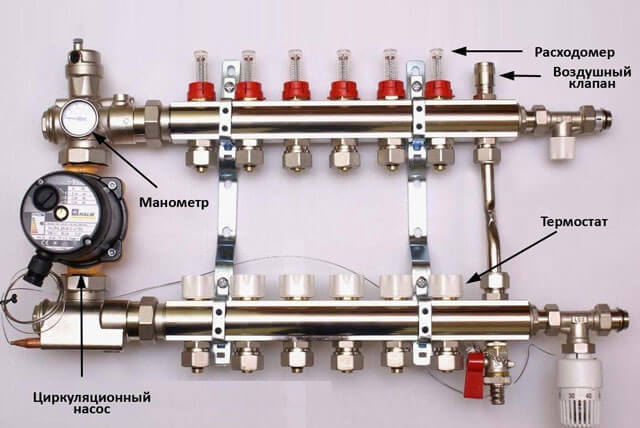
The mixing unit of the "warm floor" system is an indispensable component that enables the collector to be connected. The collector unit allows you to mix hot and cold water, thereby creating a comfortable indoor climate. But the manifold unit for a warm floor can also be used as an independent adjustment device.
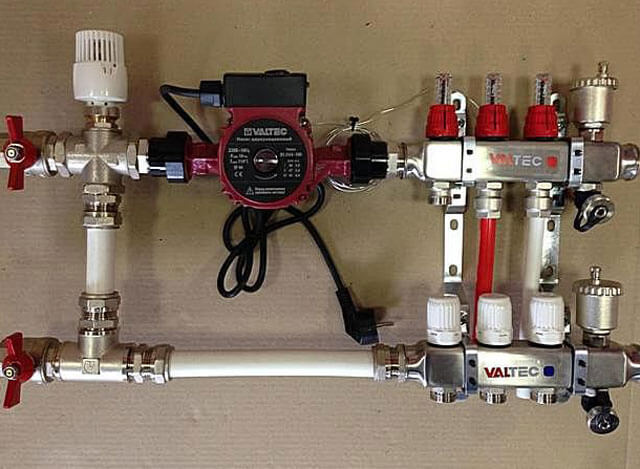

Certain pumping equipment is cut into the heating system, which provides forced circulation of water along the "warm floor" contour. Most of this equipment is equipped with two-way or three-way power chokes that regularly add cold water from the return pipe to the coolant.
How to choose the right 3-way valve
The key parameter of any three-way valve is throughput, i.e. the volume of water that the device is capable of passing through itself per unit of time. When choosing a device, this parameter should be correlated with the boiler performance.
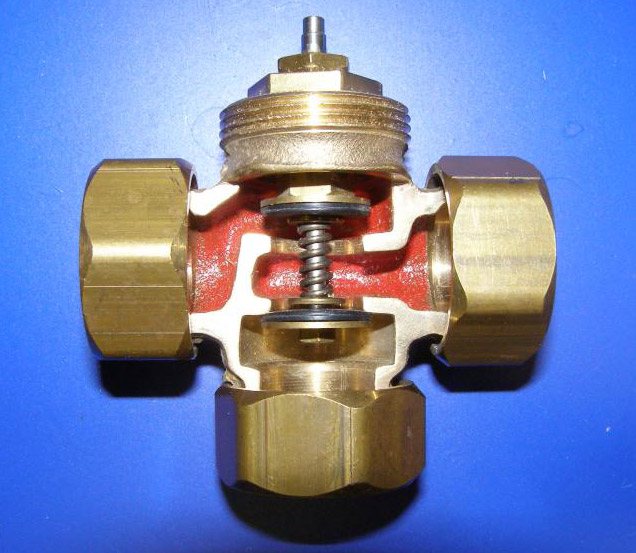

One more nuance should be taken into account here. Even if the diameter of the inlets and outlets of the valve seems to be suitable in size, this in no way indicates the actual capacity of the device. This parameter is completely and completely determined by the internal section of the holes, which, depending on the design, are closed by a ball lock or a regulating head.
In some models, the dimensions of this hole can be 4 times less than the inlet diameter. In order not to be mistaken and not to be faced with the need to rework an expensive unit, you should carefully study the accompanying documentation before buying.
Another important parameter of the device is the cross section. Ideally, the valve should fit exactly the dimensions of the pipes of the heating system. If an exact match cannot be achieved, you will have to buy adapters.
In addition, you should pay attention to the following nuances:
- It is imperative to check the availability of accompanying documentation: warranty coupons, instructions for installation and operation, certificates and licenses.
- When choosing a material, you should give preference to brass or bronze. It is these metals that are best combined with hot liquids, and also have a low level of thermal expansion. You can distinguish products made of non-ferrous metals by weight - they are much heavier than cheap “stamping” made of pressed powder materials that do not have the required level of strength.
As for specific models, on the market you can find products from several companies that have long established themselves as reliable manufacturers:
- Esbe... A Swedish company whose products are distinguished by reliability, good performance and attractive appearance. The warranty period is at least 5 years.
- Valtec... A Russian-Italian joint venture producing thermo-mixing valves that combine affordable cost and good technical characteristics. The whole range of devices is guaranteed for 7 years.
- Honeywell... An American manufacturer, who has placed at the forefront the ease of installation of manufactured products. Three-way valves of this brand have a striking design, high reliability, but no less high cost.
We recommend that you familiarize yourself with: Purpose and application of wafer-type check valves
Advantageous characteristics of the mixer
The underfloor heating mixer has several advantages that make it more efficient and popular. Among them, the following attracts special attention:
- The underfloor heating system with a mixing unit consumes 50% less energy than electric hidden heaters.
- The thermo mixer regulates the temperature of the heating device, not allowing it to rise to the maximum limits. The use of a warm floor is completely safe for all inhabitants of the house, since the risk of severe burns is reduced to zero, since the mixing unit for a warm floor excludes such cases.
- A system with a mixing group for a warm floor can be operated for up to half a century, despite the fact that the coolant tends to wear out. Compared to devices with similar functions, underfloor heating with a mixing unit is considered more advantageous. Compliance with the technology of laying the heating block allows to increase the service life of the entire system.
- The system fully complies with hygienic and sanitary requirements. It is quite easy to care for the hidden unit, and regular heating contributes to the rapid evaporation of moisture, therefore, fungus and mold are not formed in such a system.
- The heating level of the system can be adjusted depending on the outdoor temperature. This is possible due to the presence of a static thermal valve connected to the regulator.
- Manual control allows you to independently adjust the operation of the mixing unit.
- The system can use the limitation mode, thanks to which a comfortable microclimate is maintained in the room. The thermostat allows you to set certain temperature values, and the device maintains them. Consequently, the coolant will not get too cold or overheated.
Features of automatic devices
To ensure efficient operation of the thermo-mixing valve, the formation of a mixed liquid flow must be continuously monitored. It is better if this is done automatically.
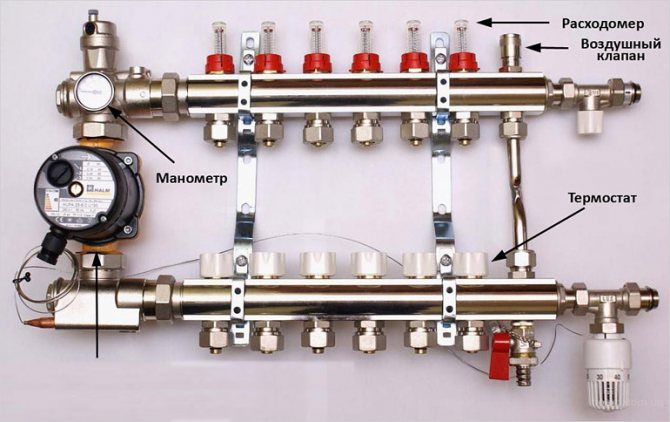

Automatic control devices are controlled by electrical or pneumatic components.
- Electric actuators are relatively inexpensive and easy to connect. This largely explains their popularity and wide distribution. On the other hand, their dependence on power supply and the need for periodic maintenance make them insufficiently reliable.
- Pneumatic actuators are more expensive and the wiring procedure is more complicated. However, these shortcomings pay off with a long service life and complete autonomy.
We recommend that you familiarize yourself with: The use of shut-off valves to shut off the flow in water pipelines
Type No. 1
The main function of this model is performed by a three-way valve, it mixes a new coolant coming from the boiler with one that has a lower temperature.Its chokes most often have a servo drive, which is necessary to control the operation of the thermostat and weather-sensitive sensors.
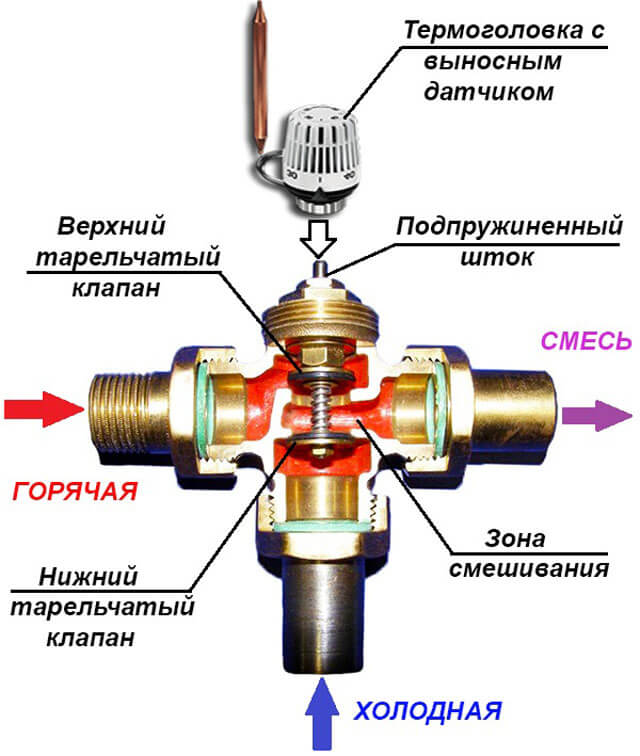

This type can be called the most optimal mixer option for a warm water floor, although its disadvantages cannot be ignored. First, a signal from the thermostat can cause the valve to open completely. As a result, a large amount of water heated to a temperature of 85-90 degrees will enter the pipeline. Such differences most often provoke a rupture of the coolant as a result of a strong increase in pressure.
Secondly, the control unit has an increased throughput. This makes it difficult to regulate temperature conditions, therefore, space heating will be ineffective.
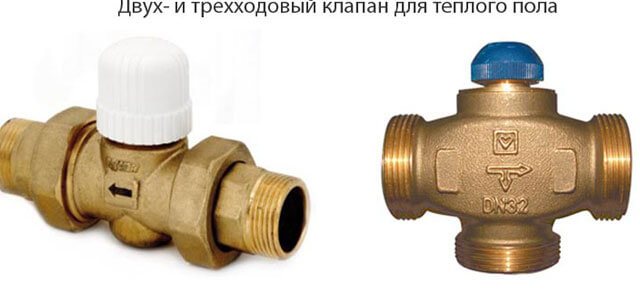

Despite these disadvantages, a warm floor with a mixing unit of this type effectively heats rooms that have a fairly large area.
The place and role of mixing valves in the heating system "warm floors"
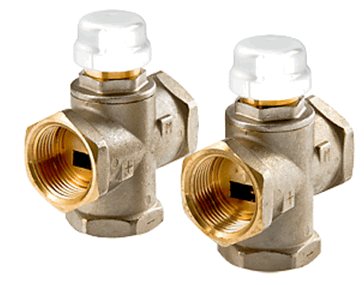

The main task that consumers have to face when solving the issue of installing underfloor heating in their home is to achieve the required coolant temperature. For radiators, water with a temperature of 75 0 C is quite acceptable, which cannot be said about pipes that are laid in the thickness of the concrete screed.
Important! Excessive heating of the concrete screed leads to a deterioration in the temperature balance inside the heated room. Floor covering (in most cases wood-based) at high temperatures quickly loses its aesthetic and technological qualities, becoming unusable.
In accordance with sanitary standards, the normal heating temperature of underfloor heating should not exceed 26 0 C. Then the middle layers of the air mass inside the room warm up to comfortable values of 20-22 0 C. In order to obtain such temperature parameters, the water entering the loops the water circuit must be heated to 50 0 C. Slightly less than 50% of the heat energy of the heated water is spent on heating the floor heating puff cake. Taking into account the thickness of the concrete layer, the material and the type of floor covering, the temperature on the floor surface decreases.
A mixing unit, which is a set of interconnected devices and devices, helps to achieve a significant decrease in the temperature of the boiler water at the inlet to the heating water circuits. One of the main roles in the work of the mixer is played by a thermo-mixing valve that mixes water for a warm floor. Thanks to this small device, two streams of water, cold and hot, are mixed so that the water at the required temperature is obtained at the outlet. There are two types of valves installed in mixing units, three-way and two-way. Each of the types of cranes performs its own tasks and functions determined by the technological process. Which appliance is best for your warm floors? What is behind the selection of the type of mixing and regulating device?
Type No. 2
This type of mixer for underfloor heating collector is based on the operation of a two-way control valve. Unlike the first option, water mixing occurs constantly, and not by a signal from a temperature sensor. Consequently, the temperature regime of the floor surface does not exceed the specified values.
The special feature of the two-way valve is its small flow capacity, which means that the temperature conditions will be controlled stably and gradually.
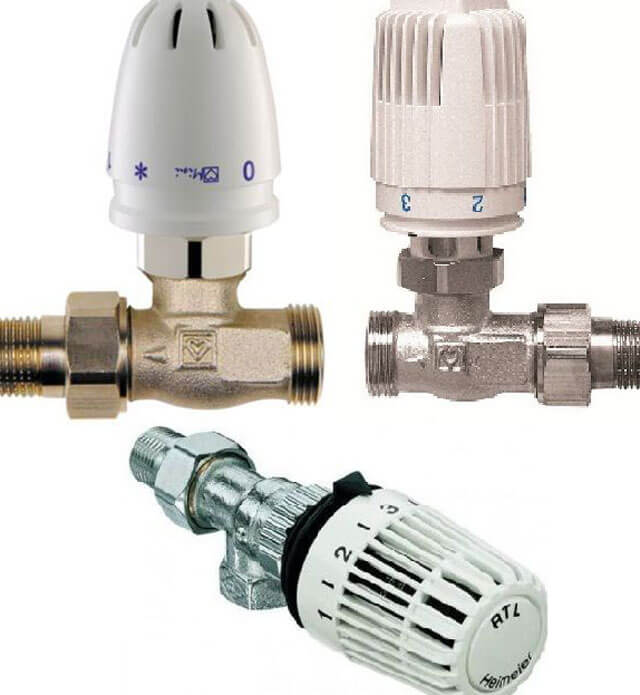

The disadvantage of this type is the limitation of the heated area. Experts do not recommend installing hidden-type heating systems with such a mixing unit in rooms with an area of no more than 200 square meters.
Two way
What does it consist of
A two-way valve for underfloor heating is a device that restricts the access of hot flow to the underfloor heating pipe system.It blocks the lumen of the channel conducting the hot direct flow by a certain amount, reducing its supply within certain limits, or, conversely, increasing it to raise the operating temperature. In fact, a two-way valve is a conventional tap, as it is sometimes called.
Attention! Strictly speaking, a two-way valve is not exactly a valve in the full sense of this term, however, the established terminology prefers such a designation of the device.
How does it work
The two-way valve is installed in the break of the straight main pipeline and sets a certain mode of replenishment of the working mixture with hot coolant.
For a simplified understanding of its action, you can consider the action of the hot valve in the mixer - the temperature of the water coming from the tap depends on the opening value.
A two-way valve works in approximately the same way, the only difference is that mixing is not performed two separate, but one and the same stream, which has a temperature difference in different sections.
Description of the manifold distribution system
One of the important elements of the "warm floor" system is the collector. It is he who regulates the mode of the heating elements and distributes the heat carrier, heated to a certain temperature, along the heating circuit.
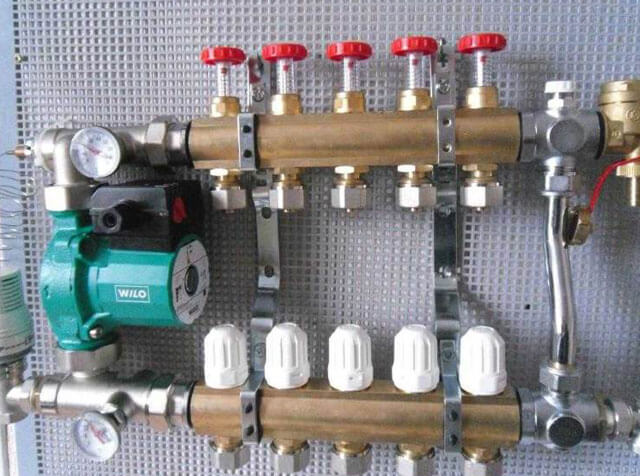

For full and efficient operation of the collector, installation of additional elements is required, including thermal valves and flow meters. Therefore, it is not recommended to engage in self-assembly of the mixing unit for underfloor heating without a pump. It is best to entrust the installation and installation work to a professional master. He will correctly select the components for assembling the manifold block.
Installation process
It is the specialists or service workers of the company supplying and selling mixers for the "warm floor" system that should connect systems of this type. However, for general information, you can study the process of putting the node into operation. In addition, this information should be studied by home craftsmen who plan to independently perform work of this type.
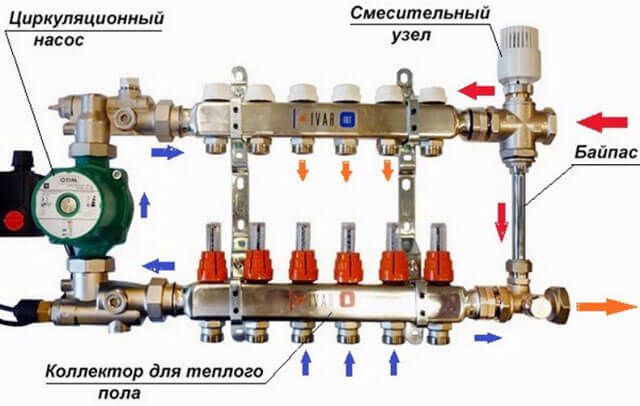

Installation of a distribution unit for underfloor heating consists of five stages:
- At the first stage, the place where the collector group will be located is determined, and the supply and return pipes of the common heating system are supplied.
- At the second stage, the valves and the manifold assembly are connected and preparatory actions are carried out for the installation of the circuit.
- The third stage involves the installation of connecting elements and the installation of a manometer, temperature sensor and other control and measuring devices.
- The fourth stage can be called a test stage, since at this time the work of the mixing unit is set up and test starts of the system are performed. This allows you to check the correct connection and installation of equipment, as well as to make sure that the collector unit and the entire system as a whole are working properly.
- At the fifth final stage, the tightness of the "warm floor" system and connecting nodes is checked. If, as a result of the checks, no leaks were detected, and the system functions flawlessly, then the installation of the manifold assembly for the warm floor can be considered complete.
Water floor thermostat sensors
Before using the regulating device, you need to know how to regulate the temperature of the warm floor and what elements the system consists of.
Temperature control sensors monitor the temperature:
- underfloor heating;
- indoor air.
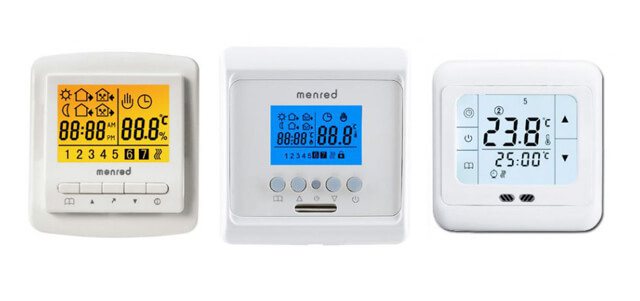

The fact is that when installing the thermostat, a number of conditions must be observed:
- there should be no sources of cold or warm air in the immediate vicinity of the device;
- sunlight cannot fall on him;
- lack of drafts;
- it must be placed so that the device can display the temperature in a given room as accurately as possible, which means that it must be installed at a height of 1 to 1.5 meters from the floor surface.
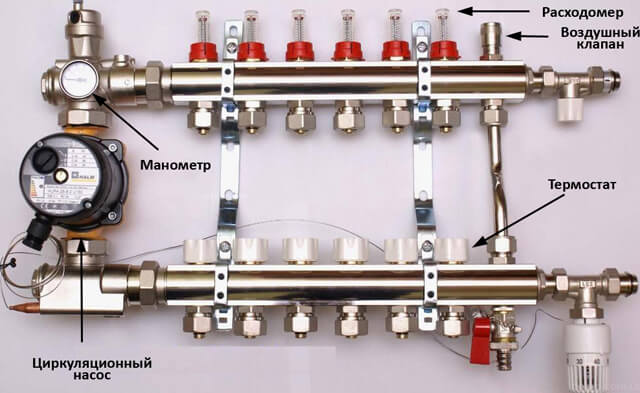

A remote floor sensor is a small device attached to the end of a long cable. This device must be fixed to the floor at a distance of at least 50 centimeters from the walls. It should be installed at an equal distance in relation to the nearest pipes with a heat carrier. The opposite end of the cable is led to the thermostat and connected to the required terminals (read: "Correct installation of the underfloor heating thermostat and operating conditions").
Install the floor sensor before pouring the screed when laying the heating circuit. But since the devices can break, it is advisable to place them in a special corrugated sleeve to ensure the possibility of replacement. The end of the sleeve in the screed must be insulated, otherwise cement mortar may enter it.
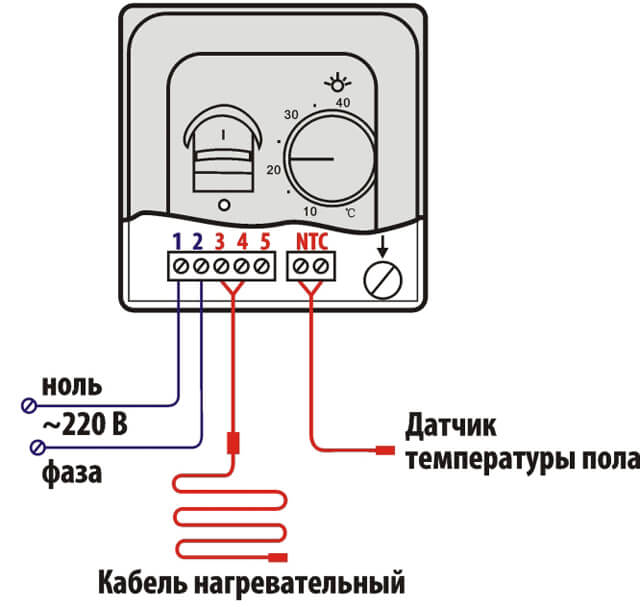

The other end is placed in a groove on the wall and placed on the back box of the device. Such a sequence of installation of water floor sensors is not an easy task, but if the device breaks down, it can be changed quickly and easily.
In the case when a flooring system for arranging a warm floor was used, the installation method is similar. In this case, the corrugated sleeve must be attached to the system and must not be pinched.

